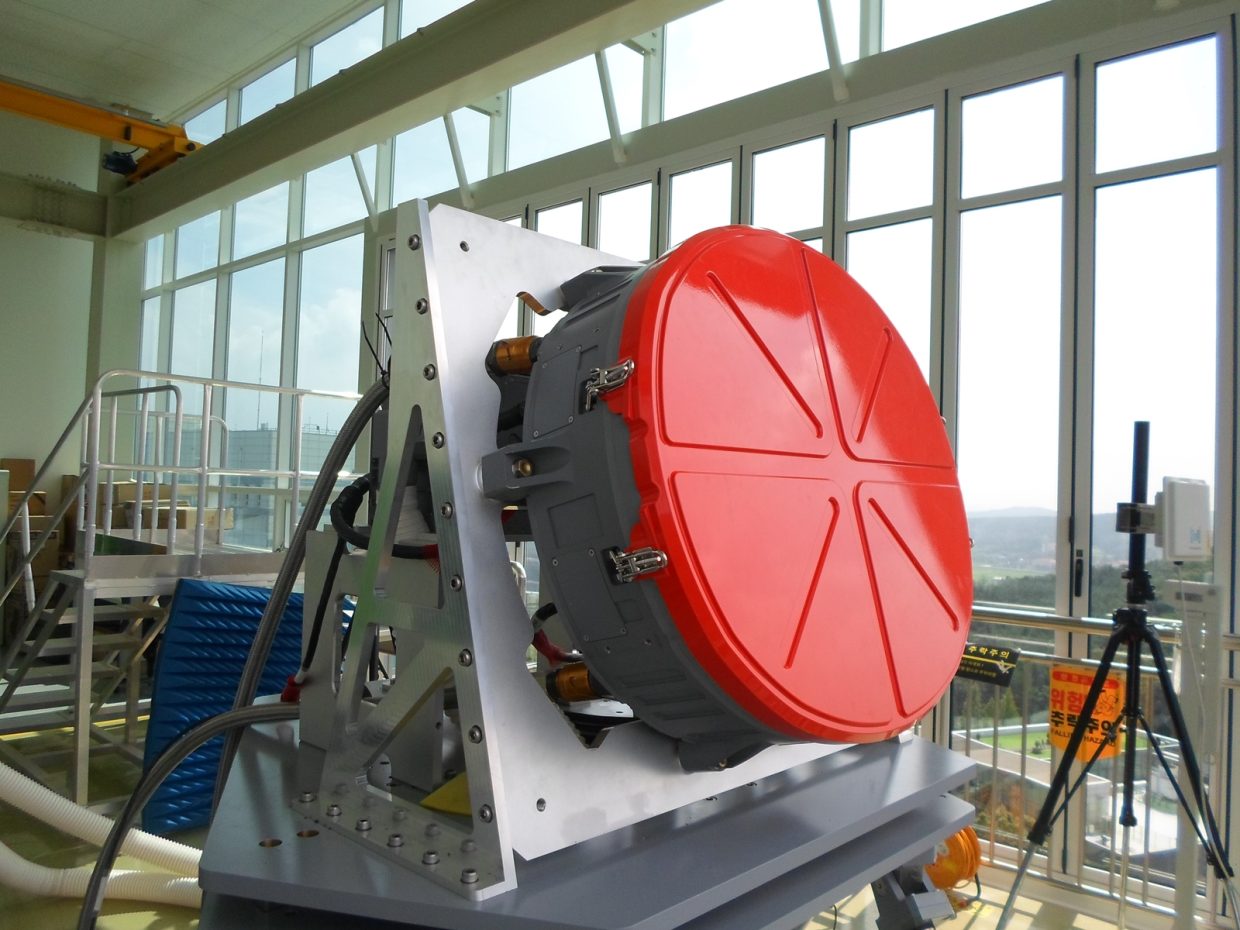KF-21 Boramae: Hanwha Unveils 1st Mass-Produced, Indigenous AESA Radar For Next-Gen KF-21 Fighter Jet

Indigenously developed AESA radar enters mass production
“Hanwha Systems, Korea’s only firm to develop, produce, and export AESA radars…Expanding global reach with multi-platform radar solutions”
Hanwha Systems has completed the rollout of the first mass-produced active electronically scanned array (AESA) radar for South Korea’s next-generation KF-21 fighter jet, marking a significant milestone in the nation’s drive to develop advanced fighter avionics domestically.
The rollout ceremony, hosted by the Defense Acquisition Program Administration (DAPA) and organized by Hanwha Systems, was held on August 5 at the company’s Yongin R&D Center.
The event brought together more than 50 attendees, including senior officials from the Republic of Korea Air Force, DAPA, the Agency for Defense Development (ADD), and other key government and defense institutions.
Following an initial production contract signed last year, Hanwha Systems finalized the full agreement earlier this year. Under the program, the company will deliver 40 AESA radar units between 2025 and 2028 for integration into the KF-21.

Often referred to as the “eyes” of a fighter jet, AESA radars provide simultaneous multi-mission capabilities, including tracking airborne, ground, and maritime targets. Compared to legacy mechanically scanned radars, AESA technology enables faster target acquisition, broader coverage, and enhanced survivability by simultaneously engaging multiple threats.
Hanwha Systems began developing the radar in 2016 and unveiled its first prototype in 2020—just four years after development commenced—demonstrating its indigenous radar capabilities to the global defense market. With the start of mass production, the radar is now ready for integration into the KF-21.
The rollout took place at a newly completed antenna testing facility at the Yongin R&D Center. Completed in late 2024 specifically for AESA radar development, the facility includes a Near-Field Chamber capable of testing up to four airborne radar systems simultaneously. It is equipped to evaluate core performance metrics and signal characteristics of AESA antenna arrays, each consisting of approximately 1000 transmit/receive (T/R) modules.
“Hanwha Systems is the one and only company in Korea to successfully develop, mass-produce, and export AESA radar systems,” said Hyuk Park, Head of Hanwha Systems’ Defense Electronics (DE) Division. “We are expanding our global reach with scalable radar solutions tailored to a wide range of platforms—from light fighters to unmanned aerial vehicles.”
In May 2024, Hanwha Systems signed its first export contract for AESA radar antennas with Leonardo, a leading European defense and aerospace company. The agreement covers radar systems for light attack aircraft, marking the start of Korea’s radar exports.
KF-21
KF-21 Boramae, a 4.5+ generation multirole fighter, marks a courageous leap in the South Korean aerospace ambitions. Developed by Korea Aerospace Industries (KAI) to replace aging F-4 and F-5 fleets, the KF-21 aims to bridge the gap between fourth- and fifth-generation fighters, offering advanced capabilities at a lower cost than platforms like the F-35.
Unveiled in April 2021, with its maiden flight on July 19, 2022, the KF-21 is now in mass production, with 40 Block I aircraft slated for delivery to the Republic of Korea Air Force (ROKAF) by 2028.
Powered by two General Electric F414 engines, the KF-21 boasts a top speed of Mach 1.81, a 2,900 km range, and a 7,700 kg payload across 10 external hardpoints. Its stealthy airframe, equipped with indigenous AESA radar, infrared search and track (IRST), and electronic warfare systems, surpasses the F-16 in range (50% greater) and airframe life (34% longer).
The aircraft integrates Western weaponry, including MBDA’s Meteor missile, enhancing its air-to-air and air-to-ground roles. Future variants, like the Block III KF-21EX, will feature internal weapons bays, pushing it toward 5.5-generation status.
The program, launched in 2015, is a South Korea-Indonesia partnership, with Jakarta holding a 7.5% stake (reduced from 20% in 2024). Despite US restrictions on technology transfers, KAI developed critical systems domestically, reducing foreign dependency.
- Questions and Answers
- Opinion
- Motivational and Inspiring Story
- Technology
- Live and Let live
- Focus
- Geopolitics
- Military-Arms/Equipment
- Security
- Economy
- Beasts of Nations
- Machine Tools-The “Mother Industry”
- Art
- Causes
- Crafts
- Dance
- Drinks
- Film/Movie
- Fitness
- Food
- Games
- Gardening
- Health
- Home
- Literature
- Music
- Networking
- Other
- Party
- Religion
- Shopping
- Sports
- Theater
- Health and Wellness
- News
- Culture

